Cable Hdmi Xiaomi Redmi Note 7
TechRadar Verdict
Its design and screen could belong to a more expensive phone, merely the Xiaomi Redmi x is allow down by a poor photographic camera and unremarkable operation.
Pros
- +
Good battery life
- +
Looks more expensive than it is
- +
Sharp, fairly high-quality display
Cons
- -
Highly inconsistent camera
- -
Very poor for video
- -
Not a great gaming phone
Two-minute review
The Xiaomi Redmi 10 is a upkeep 4G Android phone whose highlights are not initially what they might appear to be.
Xiaomi has deliberately built up the Redmi 10'due south camera housing to go far seem advanced, but the camera assortment you get here is actually mediocre at best. While its master camera has fifty megapixels to its name, the results are inconsistent and rarely all that pretty.
The real strong points are the stereo speakers, even if sound quality isn't remarkable, solid bombardment life, and a decently abrupt screen. As such, the Redmi 10 isn't as like shooting fish in a barrel to recommend equally some existent Xiaomi hits of the last yr or so, similar the fantastic Xiaomi Redmi Note 10 Pro or Xiaomi Poco X3 NFC.
The appeal is also slightly undermined past the numerous sales Xiaomi has held that run into solid phones like the Redmi Note ix Pro sell for much less.
Motorola's Moto G50 is a worthy alternative too. It generally costs slightly more and it has a lower-resolution screen, but its software is superior, the battery life even better, and it has 5G and a faster chipset.
We shouldn't overlook ane of the cardinal draws of buying a budget Xiaomi phone, though. The Redmi ten has a Full Hd brandish, at a toll for which several of the other big names only offer 720p screens. It makes a significant departure, even if information technology is something you take for granted rather quickly after switching from a 720p phone.
Xiaomi Redmi 10 release date and cost
- Out now
- Starts at $179/£149 (around AU$270)
The Redmi 10 by Xiaomi launched in Baronial 2021, arriving a little more than a year after the Redmi nine.
This phone is more expensive than its predecessor, at $179/£149 (around AU$270) with 64GB of storage or $199/£199 (roughly AU$365) with 128GB of storage, with the latter being the model reviewed here. Some regions besides get a version with 128GB of storage and 6GB of RAM (up from 4GB) for $219 (approximately £160 / AU$290).
The pricing is attainable, simply don't forget this is a 4G-simply telephone. There's no 5G mobile cyberspace, which is available in phones of a similar price at this indicate.
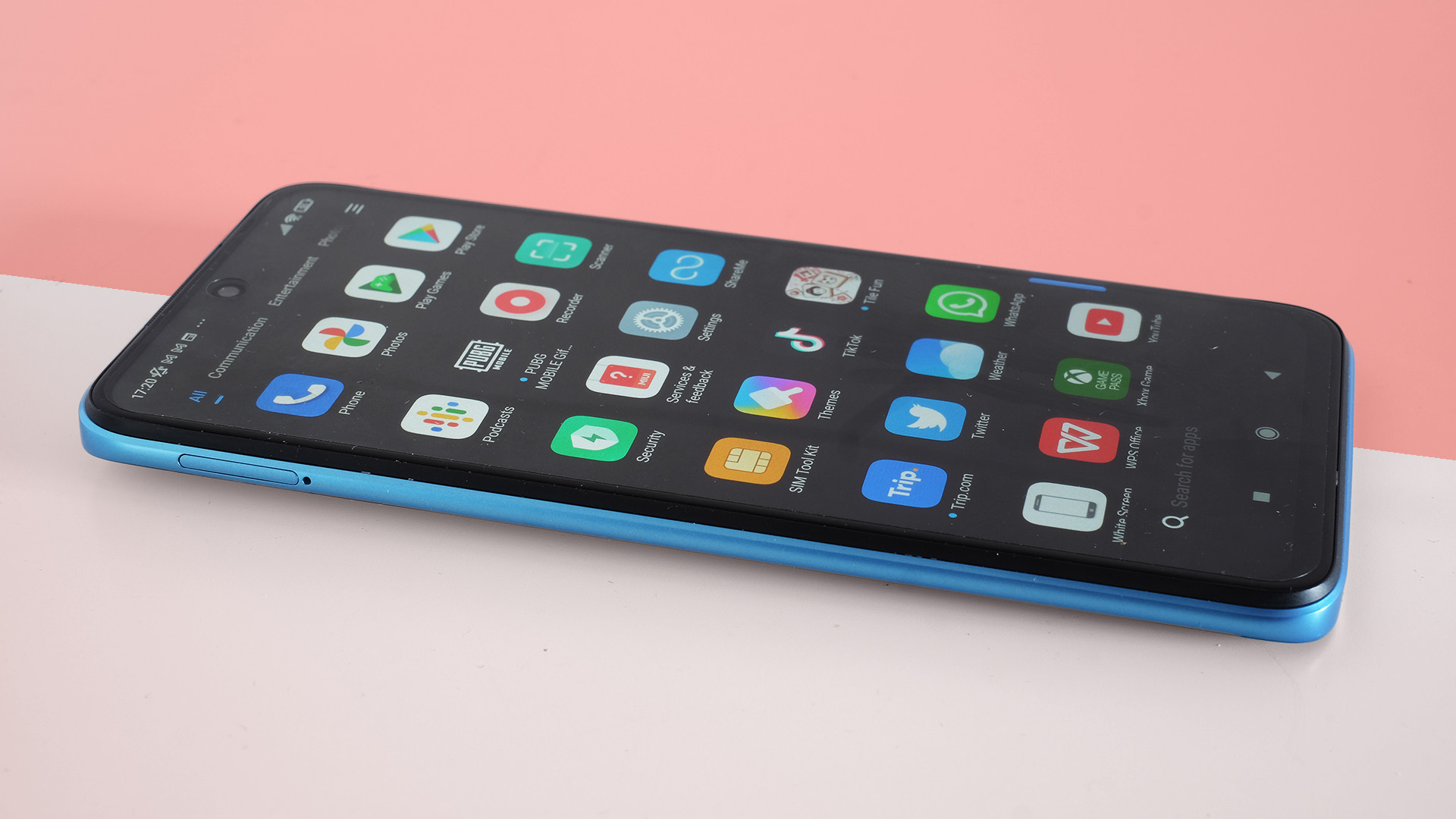
Design
- Mid-size Android, smaller than most of the Xiaomi siblings
- Plastic design dressed upwardly to look like drinking glass and metal
- A shift from a teardrop notch to a punch-hole
The Redmi x's design is a expert example of 'faking it'. This is a concept nosotros've talked about before. Lots of all-plastic phones are dressed up like college-end ones, with the intention to appear like metal and glass designs.
Xiaomi has gone a little further this time, using a camera housing design far larger and more elaborate-looking than the simple strip seen in the Redmi 9. The Redmi x's dorsum really does look similar glass. The camera really does look like information technology might belong on a $1,000/£1,000 phone.
Information technology'south all a sham, of course. The Redmi x'south dorsum is plastic, and uses a metallic-looking color slope underneath to class-up its advent. We'll become onto the photographic camera later, only a big chunk of it is merely a black border that actually sits in the rear finish, and has nothing to do with the camera itself at all.
The Redmi x has painted-on cheekbones. Simply does it matter? If you lot flashed us the phone'due south back and told us it cost $450, nosotros'd believe y'all. Nosotros can capeesh a phone that can fool friends into thinking yous spent more than. It'due south fine as long every bit you're not the 1 fooled when you come to buy a Redmi x.
In other words, bear on reading to learn more almost the Xiaomi Redmi 10'southward budget-related limitations.
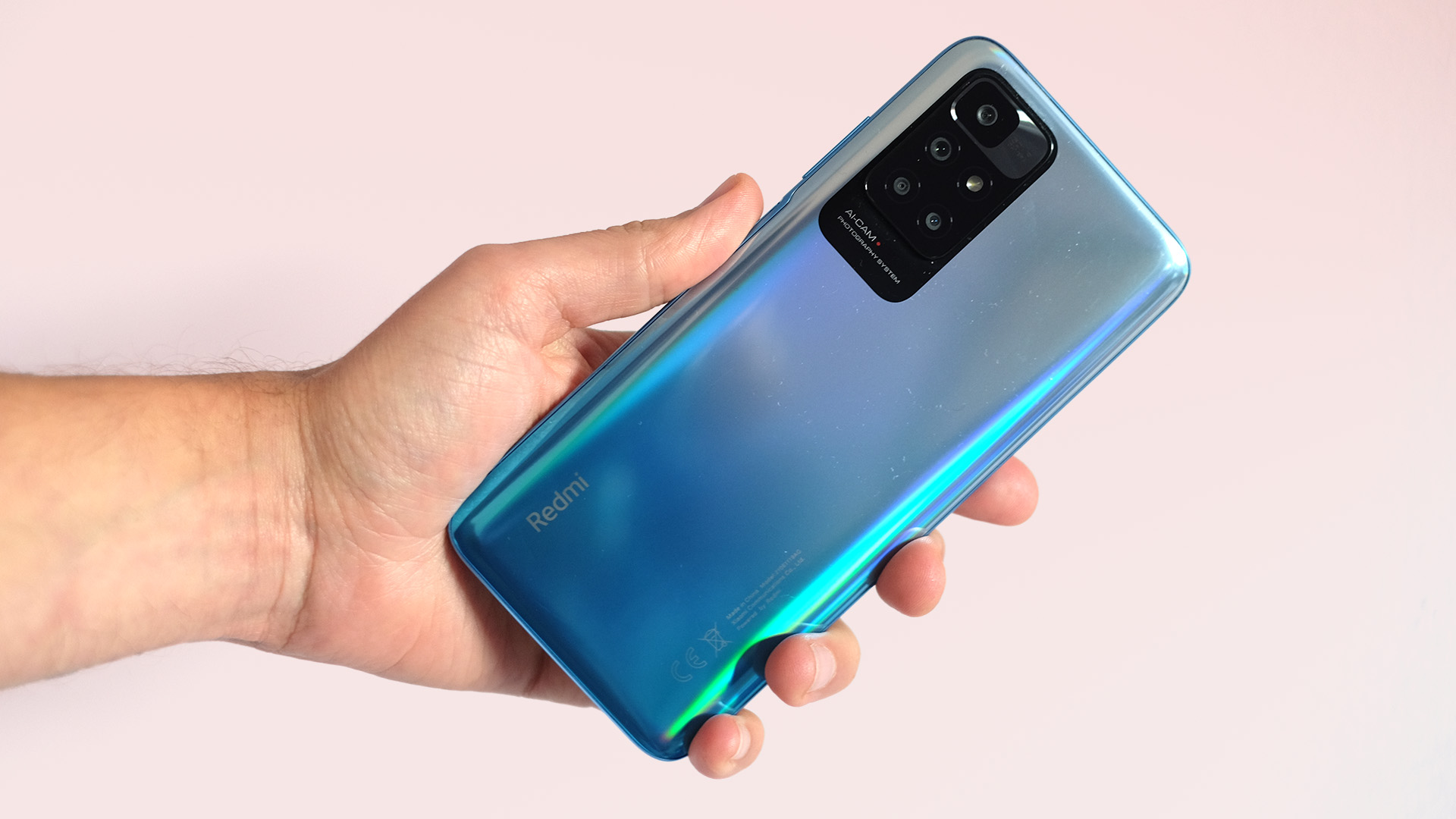
There are some less deceptive parts to the pattern. The Redmi 9 had a teardrop notch, the Redmi 10 has a dial-hole, which looks more modern to nearly eyes.
Screen borders are typical of a cheaper Android, but are non excessive, and the Redmi 10 is a lot easier to handle than some other Xiaomi phones. Many of the company's affordable lines use ultra-large displays that add significantly to a phone's width. The Redmi ten is 75.5mm broad, similar to a Samsung Galaxy S20 Atomic number 26.
You lot get a side-mounted fingerprint scanner for secure unlocking, and while there's a slightly longer pause while it works than some top-end phones, it's a reliable pad. The Xiaomi Redmi x also has an IR equalizer, which is something yous only tend to see in select Chinese phones these days.
An IR blaster sends out the aforementioned signals as archetype TV remote controls, using a Mi Remote app. It turns the Redmi x into a universal remote. We couldn't actually become it to piece of work, testing with an LG Television set, a Planar projector and an Anthem AV receiver. Just y'all may have better luck. It may be disabled in our device's firmware for some reason.
Display
- half dozen.5-inch 1080p LCD
- 90Hz refresh rate with 60Hz battery saver mode
- Off-white 445-nit brightness turbo style for outdoors
The Xiaomi Redmi 10's screen is one of the stronger parts of the phone, although primarily against rival brands rather than other Xiaomi Androids you might buy.
At this affordable level, Samsung and Motorola both use 720p screens with a lower pixel density than the Redmi 10's. This six.5-inch screen is very sharp. Pixel density of around 405 pixels per inch is fantastic for a telephone this inexpensive.
Color saturation is good too although we do recommend tweaking it a bit. Fresh out of the box the Redmi 10's color temperature was a piffling too absurd, probable used as a manner to brand it appear to 'pop' a bit more than.
Ready the color temperature to 'warm', or switch from the Bright to Standard fashion, to requite the display a more relaxed, inviting appearance. We besides constitute, every bit with so many phones, that the default wallpaper really doesn't show off the color all that well. A few piffling alterations in and information technology went from looking decent to excellent.
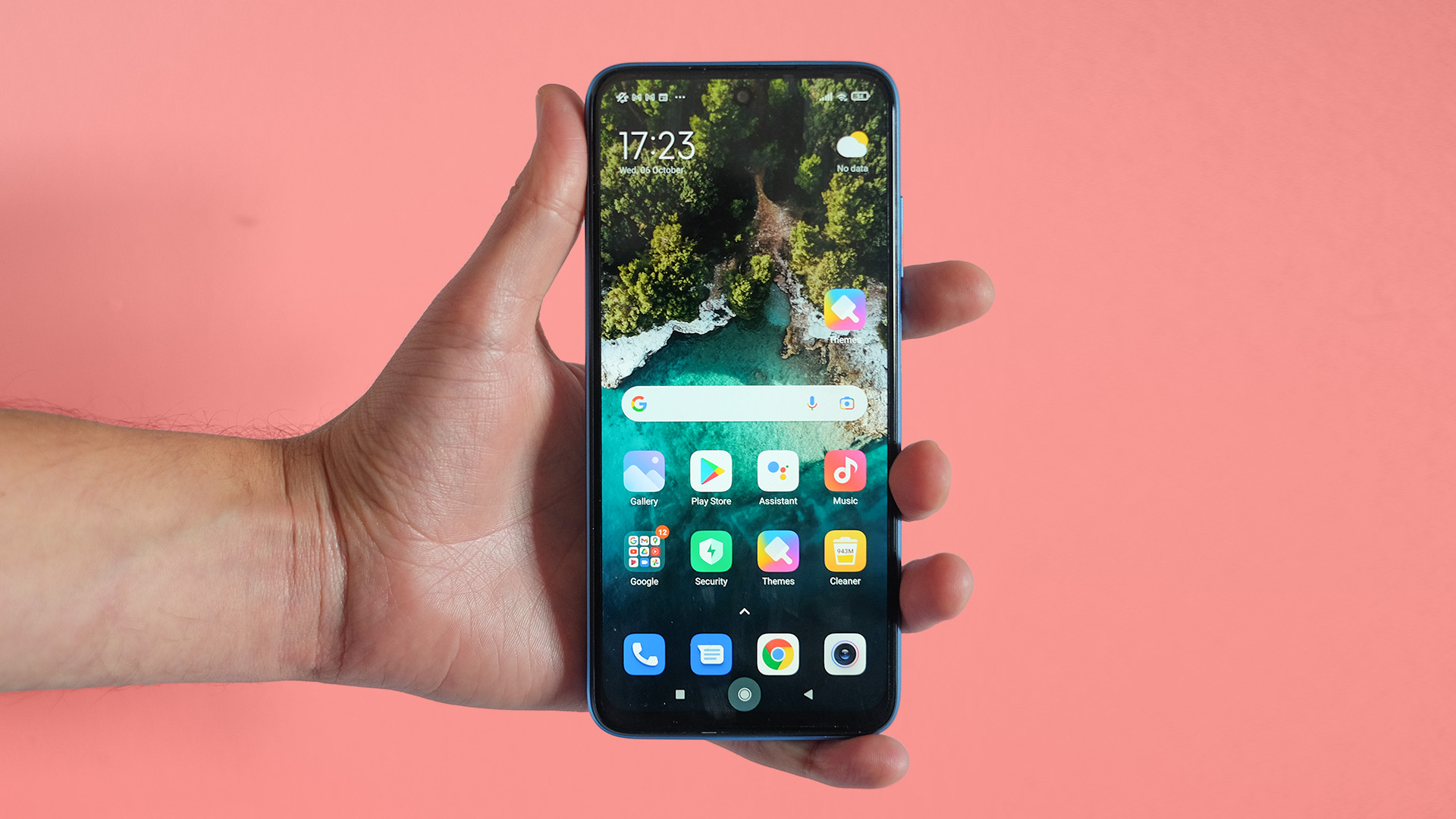
The Redmi 10 is a 90Hz phone but this skill wasn't enabled every bit standard. You lot can choose either 60Hz or 90Hz modes, and the faster one makes Android menus appear to scroll more smoothly.
This isn't a super-clever screen that changes refresh rate as required, dipping down on static screens, merely it will drop downwardly to 60Hz for apps that don't make use of a higher refresh rate, similar Netflix.
This is ane of the amend displays you'll notice at the cost. But it'southward not perfect. It is an LCD, and so blacks won't announced perfect in dark rooms. We don't think that's really an issue. Brightness might be, though. The Redmi ten can reach 445 nits outdoors in brilliant sunlight. While this is fine for a cheap phone, it'south less than the 600+ you tin get from the Redmi Note 10 Pro.
We noticed this when taking photos outside. This kind of screen brightness doesn't make the preview epitome appear all that clear in direct sunlight.
Cameras
- 50MP main sensor is okay at all-time, often poor
- 1080p 30fps unstabilized video is weak
- Poor ultra-broad and tertiary cameras
The Xiaomi Redmi 10's photographic camera is its most deceptive expanse. Information technology looks and sounds advanced. The camera array seems like the photographic equivalent of a Swiss army knife from a glance, and it has a 50MP sensor.
Bad news: where phones at this level typically accept i decent camera and a bunch of duds, the Redmi ten has no good cameras. Until at present we've only really had high-quality 50MP cameras in phones, similar those of the Oppo Discover X3 Pro. But Samsung, every bit it has done several times in the past, lowers the tone with the S5KJN1 sensor seen here.
A cracking case of why more megapixels is frequently bad news, this sensor fits 50 1000000 pixels into a very small i/two.76-inch chip. So where the Oppo Detect X3 Pro has sensor pixels of 1 micron size, these are 0.64 microns. They are some of the tiniest pixels seen in a telephone camera.
We only dug this information up later on going out on several shoots with the Redmi 10, having witnessed all the negative furnishings nosotros'd usually acquaintance with such tiny photosites, and wondering why.
The Redmi 10's dynamic range is bad. The HDR way can endeavor to hide this to some extent, but it besides is faulty, sometimes refusing to engage (when using HDR Automobile) and generally pumping out highly inconsistent results. And there'southward merely so much y'all can practise to hide the deficiencies of a crappy sensor with software-based enhancement.
HDR modes typically merge multiple exposures so very bright and dark parts of the scene can be captured in one frame and look properly resolved. While the Redmi 10 has a crack at this, when HDR works, the shadow/darker parts of the flick often look like porridge. Any natural textures become fuzzy and vague, as if captured by a weak selfie photographic camera rather than a primary camera.
Colour reproduction is poor in less than solid lighting, and when the Redmi 10 tries to help things by applying colour filters to sunsets, the results rarely match what your eyes perceive.
Nighttime-fourth dimension photos look bad whether you use the Night mode or not. Information technology brightens up images a flake, merely images remain noisy and are often less warm-looking than those taken with the Auto mode.
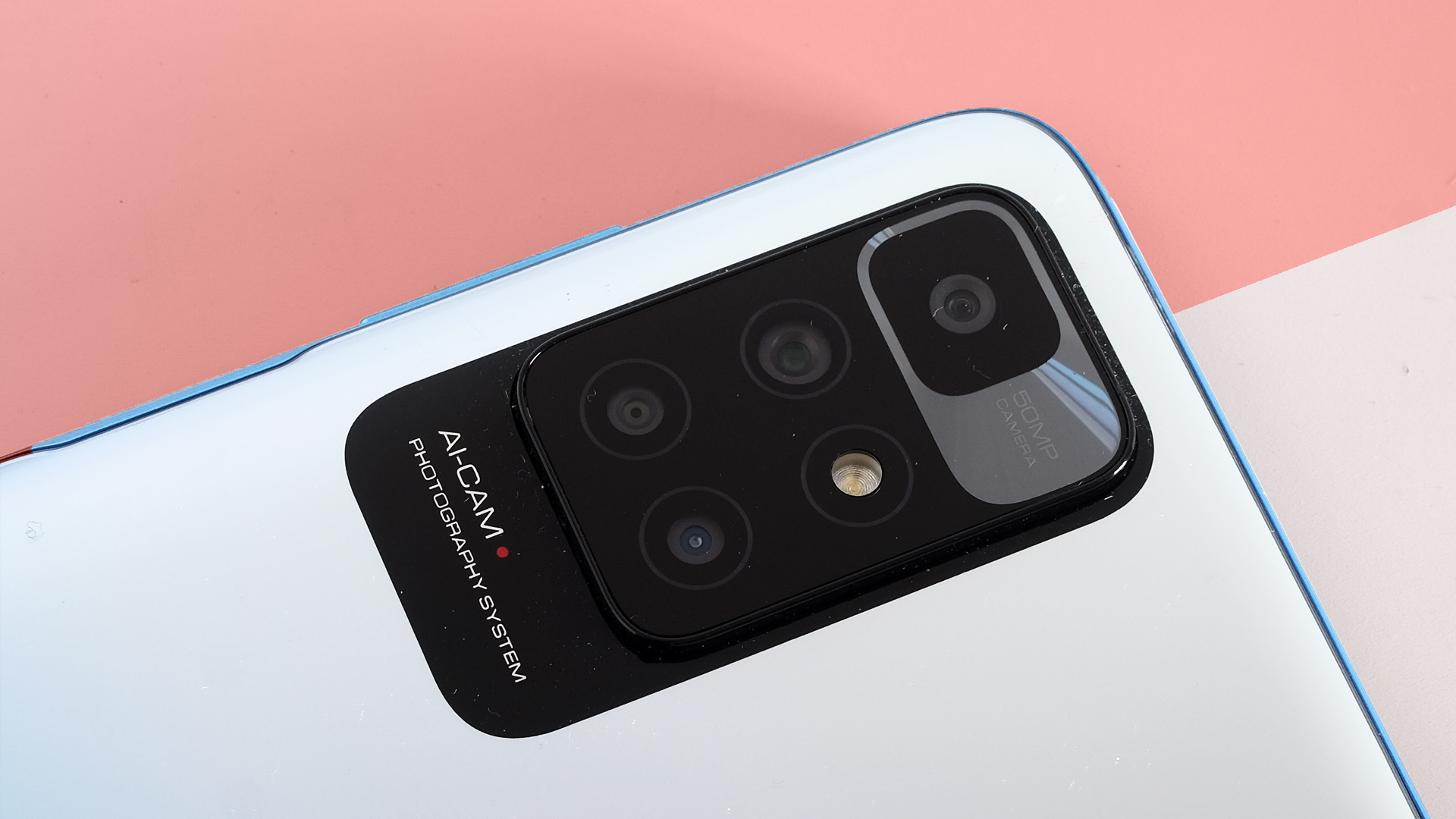
The worst results are perhaps in mid-level lighting, when shooting indoors or under tree cover. Images look soft, indistinct, and muddy tracks that should look brown become purple.
Adjacent to a slightly older phone y'all tin can purchase at a similar price (albeit the lesser storage version), the Xiaomi Poco X3 NFC, the Redmi 10's chief camera is dismal. Video clips taken with the telephone will as well oft turn out unusable because there is no stabilization.
In a telephone at this level nosotros don't await high-end video features like stabilized 4K and 120fps slow-mo, but the Redmi 10 is limited to 1080p, 30 frames per second capture. And even at this lowly capture rate it tin't manage electronic/software stabilization.
It's non impossible to take expert shots with the Xiaomi Redmi x. You tin detect a few in this review's photo gallery that wait just fine. But Xiaomi doesn't get in piece of cake.
We've still only just covered the phone'due south first camera. The 8MP ultra-wide is closer to what we've expected in a budget telephone. It is a low-stop OmniVision photographic camera with softer images and limited dynamic range.
Sky gradients ofttimes look unrealistic, and clipped highlights in clouds are to exist expected. The Redmi 10's epitome signal processor (Internet access provider), the brains backside the camera, doesn't seem to be then hot.
The other two cameras are filler pieces, typical of lower-end phones. At that place's a 2MP depth sensor, used in the Portrait mode to let you capture images with a blurred-out groundwork. The last camera is a 2MP macro that, like all 2MP macro cameras, takes very poor pictures. An 8MP selfie camera sits on the forepart and is unremarkable.
If you want a good camera, the Redmi 10 is not the obvious choice. Lots of 12MP, 13MP, 16MP and 48MP cameras volition outperform this phone's 50MP one.
Photographic camera samples

Software
- Has an unusually annoying version of MIUI
- Android 11 cadre software
- Some pocket-sized lag
The Xiaomi Redmi 10 is an Android 11 phone and uses Xiaomi's MIUI 12.5 interface. And information technology is a rather annoying version of this software.
Y'all can cull whether to have an app drawer or not. Some may not like the stylistic choices of the settings card, but it'south hardly worth getting upset over. However, the Redmi ten'south drib-downwards is not helpful.
In a conventional take on Android, yous swipe down in one case to open upwards your notifications bar. You swipe over again to admission brightness controls and feature toggles. The Redmi 10 takes a different arroyo, using the right side of the screen for feature toggles, and the left for notifications.
It is a bad idea.
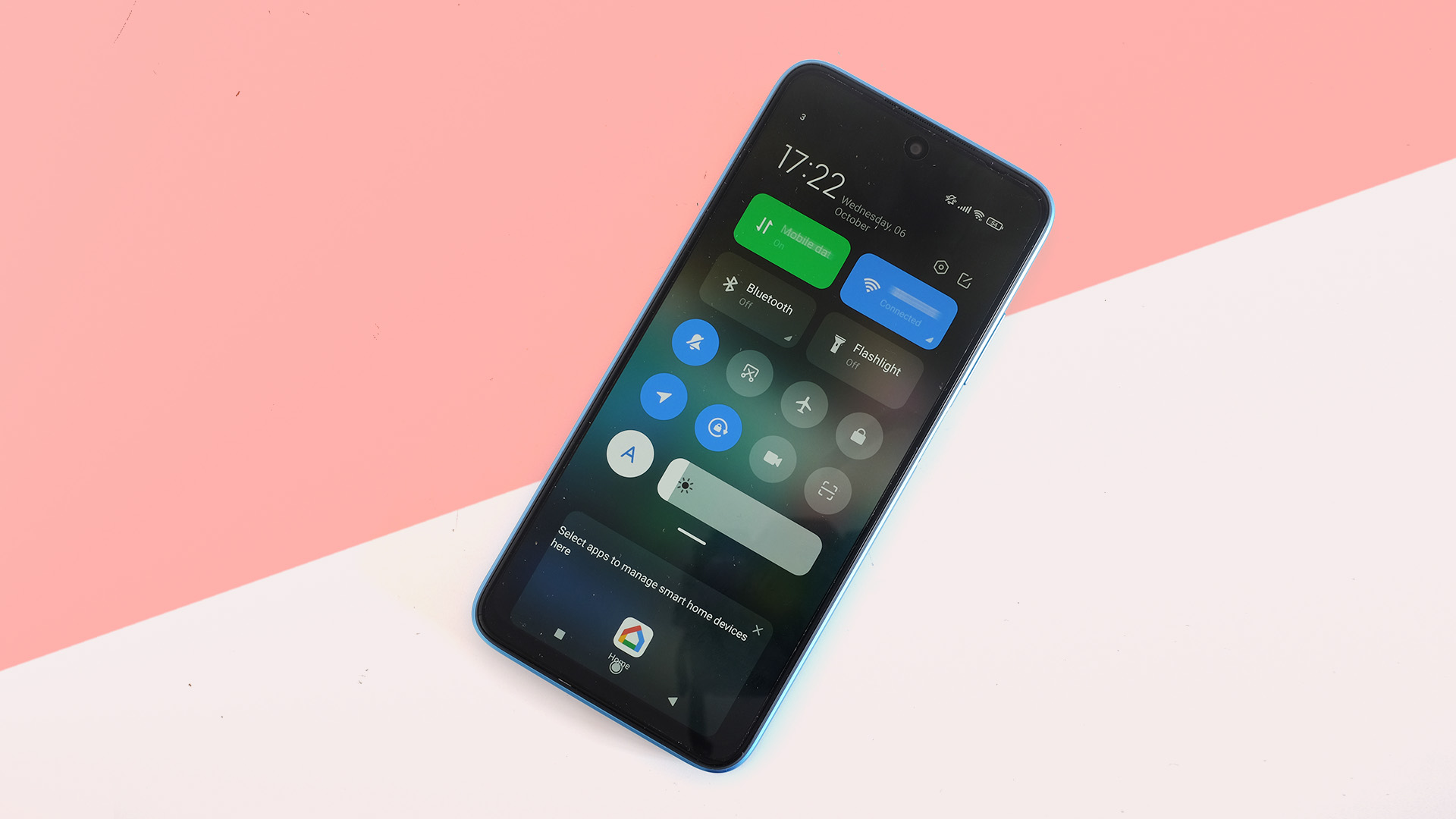
This feels clunky for i-handed use, considering you lot have to attain over quite far to pull down your notifications. Xiaomi does non use this approach in all its Androids. The Poco X3 Pro has conventional gestures: one swipe downward for notifications and quick-access toggles, ii for more than admission to settings.
The Xiaomi Redmi 10 feels like a existent pace backwards. Volition yous get used to information technology? Probably. But nosotros still discover it very abrasive after a week.
General performance of the Redmi 10 is okay, with some common caveats that come with an entry-level CPU. There are some brusque waits when you load an app that has not been sitting in the cache, because it was used a moment ago. And there's some minor lag in the interface in general.
However, most of information technology is minimal enough that we barely registered it after a few days of use.
Gaming and operation
- I of the weaker phones for gaming at the toll
- Stereo speakers, just they are lopsided in output
- Barely an upgrade over the concluding-gen Redmi 9
The Xiaomi Redmi 10 does have some more obvious problems with gaming, particularly when compared to a slightly more expensive barnstormer like the Xiaomi Poco X3 Pro.
This phone has a MediaTek Helio G88, a depression-finish processor fabricated for 4G phones. Yous might compare information technology to something similar the Snapdragon 662 used in the Moto G30.
Even with the top-finish version of the Redmi 10, with 6GB of RAM, you can't run Fortnite. Epic Games won't fifty-fifty let you lot install it. ARK: Survival Evolved runs quite poorly at college graphics settings and Asphalt 9's frame rate noticeably slows downward in busier moments. That game's busier moments often arrive several times in a 10-second window.
The gap in gaming functioning between this and the Xiaomi Poco X3 Pro is vast considering the fairly small price disparity.
This phone does take stereo speakers, which is nice for gaming. However, we weren't all that impressed when we fired upward Asphalt nine as the output is very uneven. The bottom speaker is so much louder than the one on the top of the phone that it barely feels like a stereo assortment.
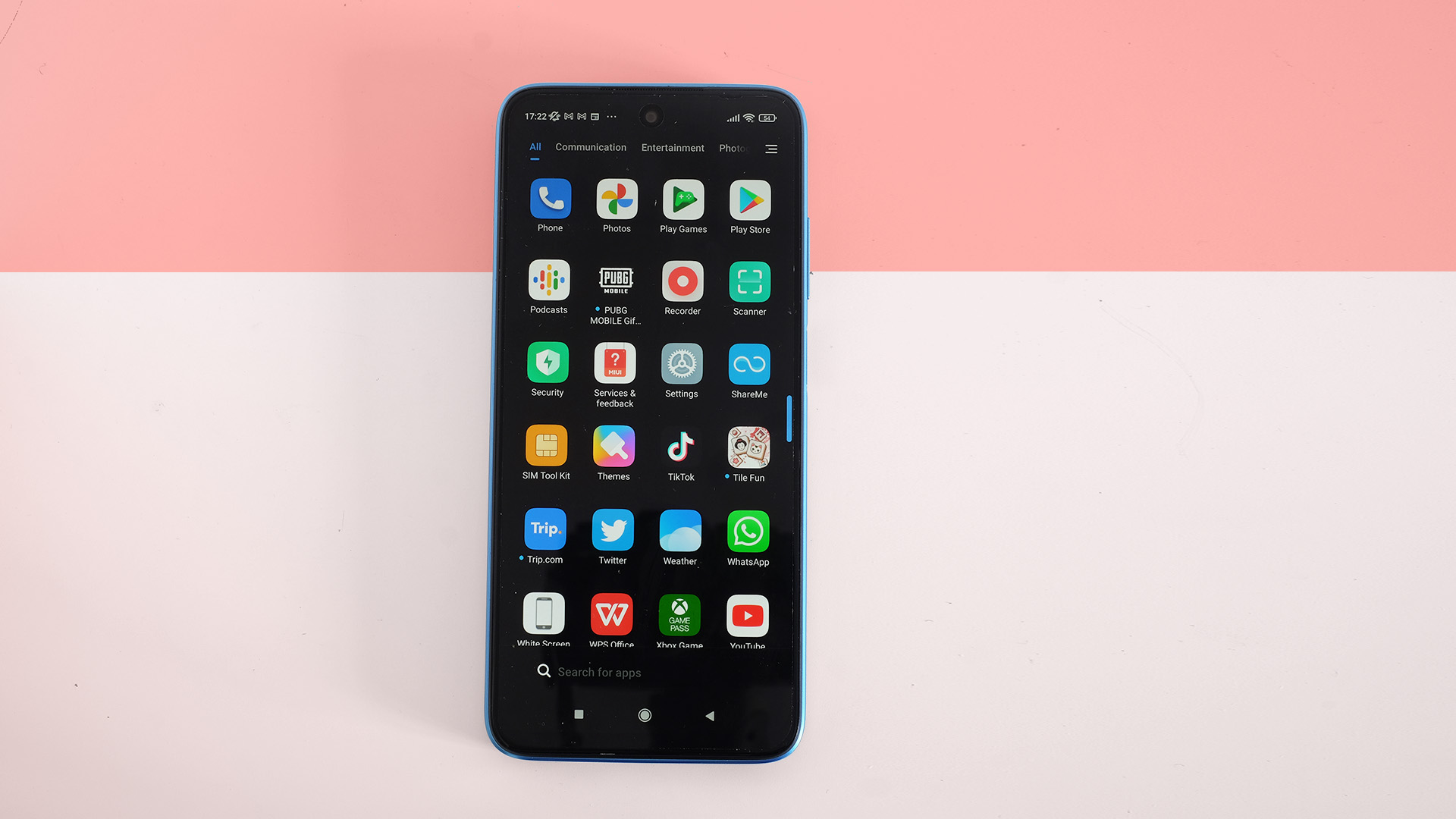
Commonly stereo arrays like this accept one speaker much bassier/heavier sounding than the other, but roughly lucifer up college-frequency output to provide a sense of Fifty/R channel rest.
At that place'due south less mid-range and 'bass' (no phones have real bass) than in the Poco X3 Pro as well, although it passes the test of making podcasts aural while you take a shower. Maximum volume is solid, the tone is but slightly thinner or more brittle than some.
Xiaomi as well uses relatively dull eMMC storage in this phone, although with read speeds of 283MB/s and writes of 152MB/s we're non looking at anything too bad. Yet, the Poco X3 Pro gets you reads of around 1000MB/due south. It's a existent functioning outlier.
Benchmarking fan? The Redmi 10 scores 1,236 points in Geekbench v (372 per cadre). The Moto G50'southward score is around 35% better, and it's most exactly the same as the score of the final-generation Redmi 9. This isn't great performance for a $199/£199 telephone (which is what our middle model cost).
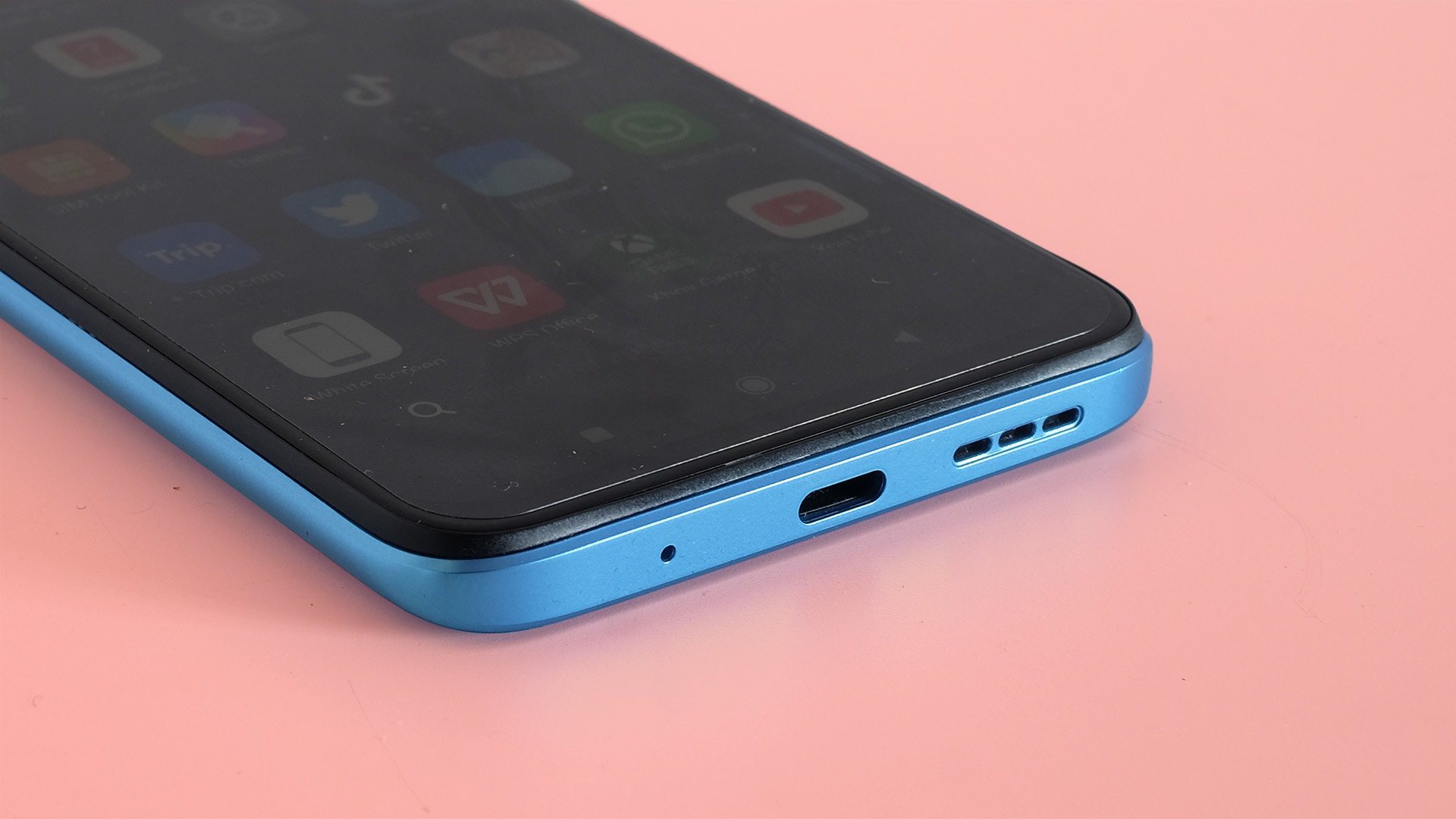
Battery life
- five,000mAh battery with 18W charging
- Very good full general apply battery life
- Slightly more expensive Xiaomi phones accuse faster
The Xiaomi Redmi 10 has a five,000mAh battery, much like most of its curvation rivals and its significantly larger siblings. We find that while the Moto G50 tends to final longer between charges, few will find any reason to complain here.
Information technology tin can final through a heavy day of use, and typically has around 30-twoscore% accuse left past the time we come to plug it in at lights-out. This is with the screen set to its 90Hz way, and you're likely to see a slight boost past restricting the refresh rate to 60Hz.
There's no improvement to bombardment charging with this generation, though. The Redmi ten has 18W charging, although information technology comes with a 22.5W charger. We used a ability meter and plugged it into both the bundled charger and a 30W 1. In both cases the phone but draws around the claimed 18W.
Later on xxx minutes of charging the Redmi 10 from a completely flat state information technology reached 29% charge. This is not close to the '50% in thirty minutes' fast charging standard.
Should y'all purchase the Xiaomi Redmi 10?
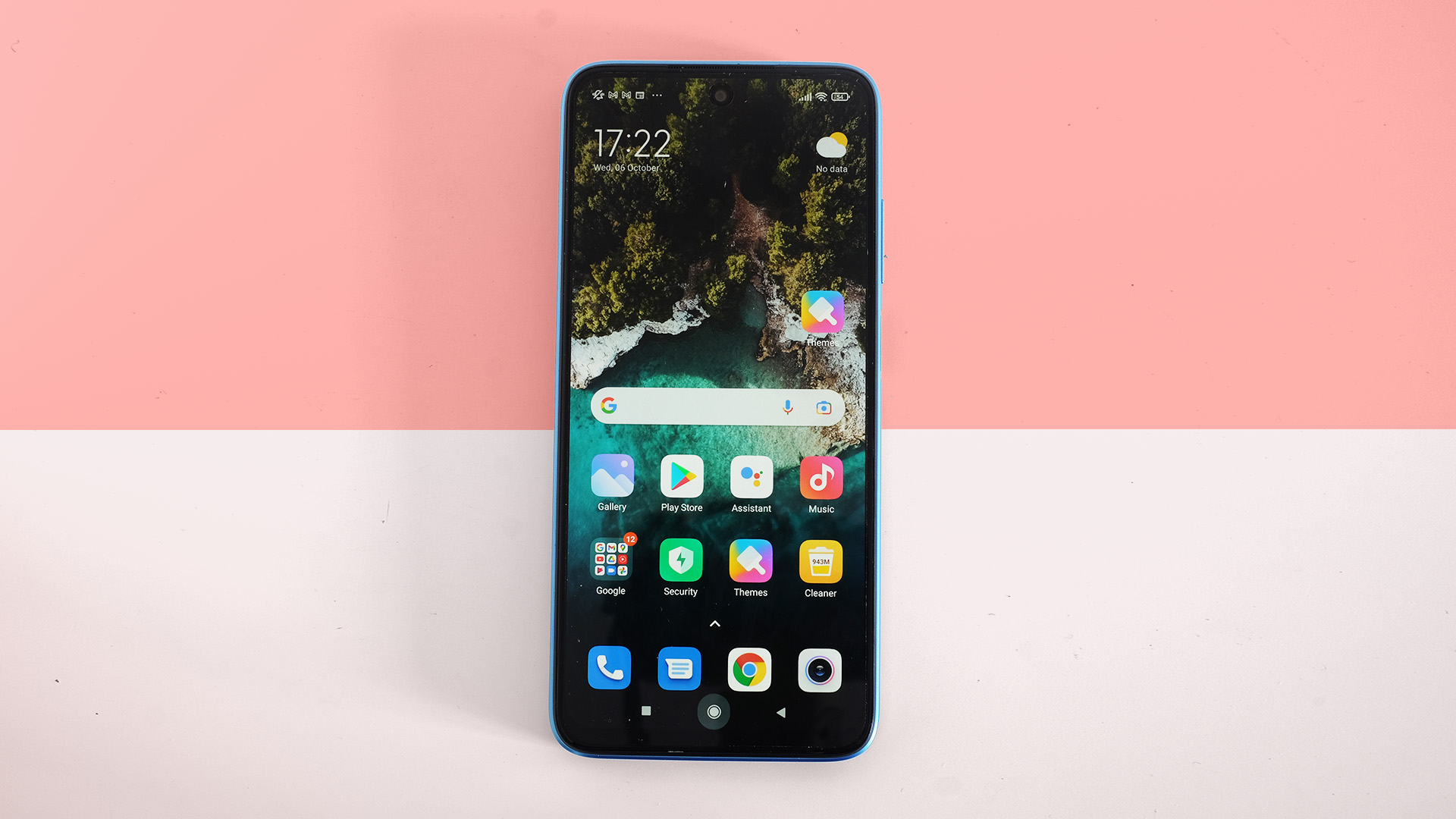
Purchase information technology if...
Don't purchase information technology if...
First reviewed: Dec 2021
Cable Hdmi Xiaomi Redmi Note 7,
Source: https://global.techradar.com/en-ae/reviews/xiaomi-redmi-10
Posted by: mosesyousin.blogspot.com


0 Response to "Cable Hdmi Xiaomi Redmi Note 7"
Post a Comment